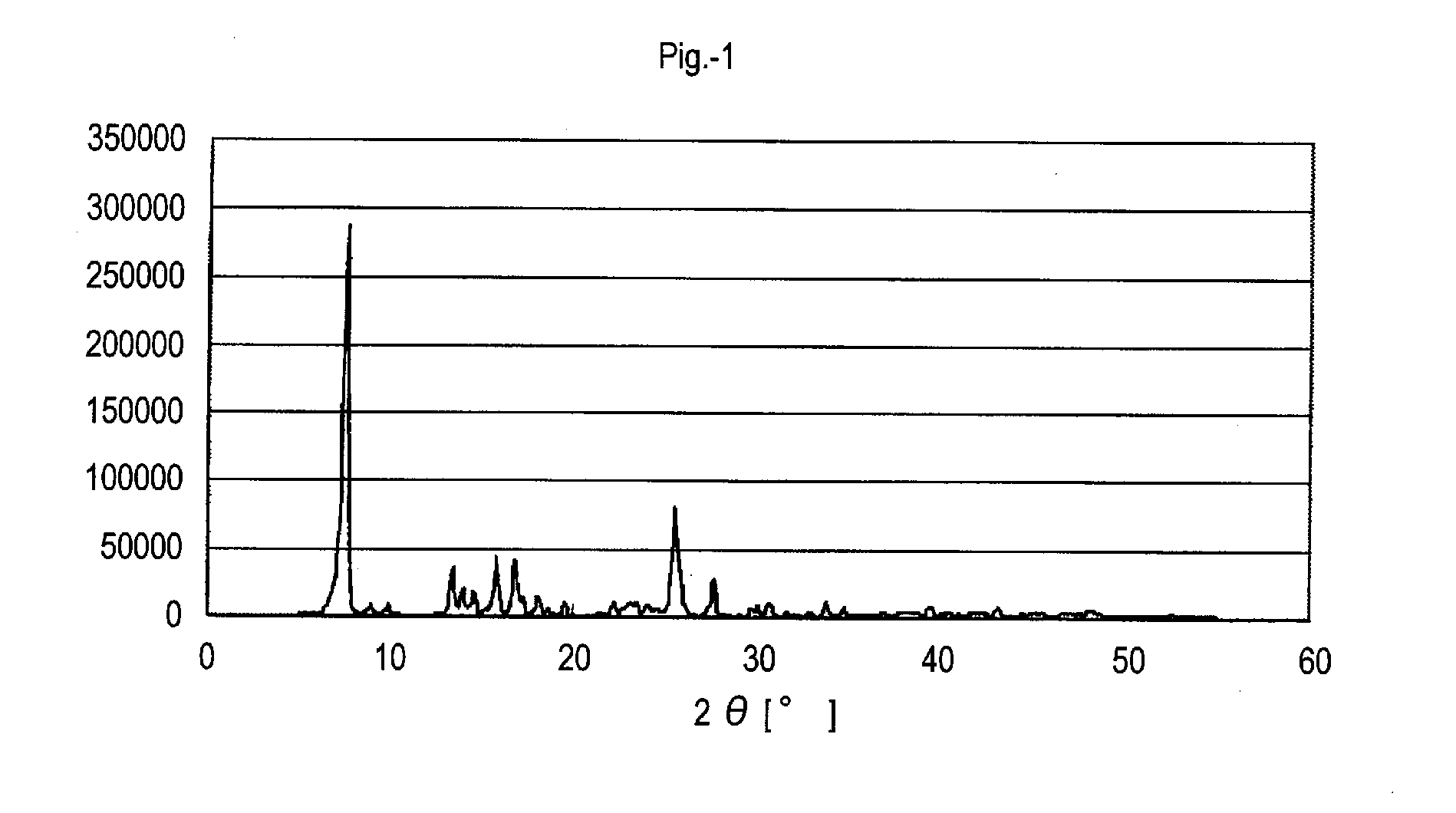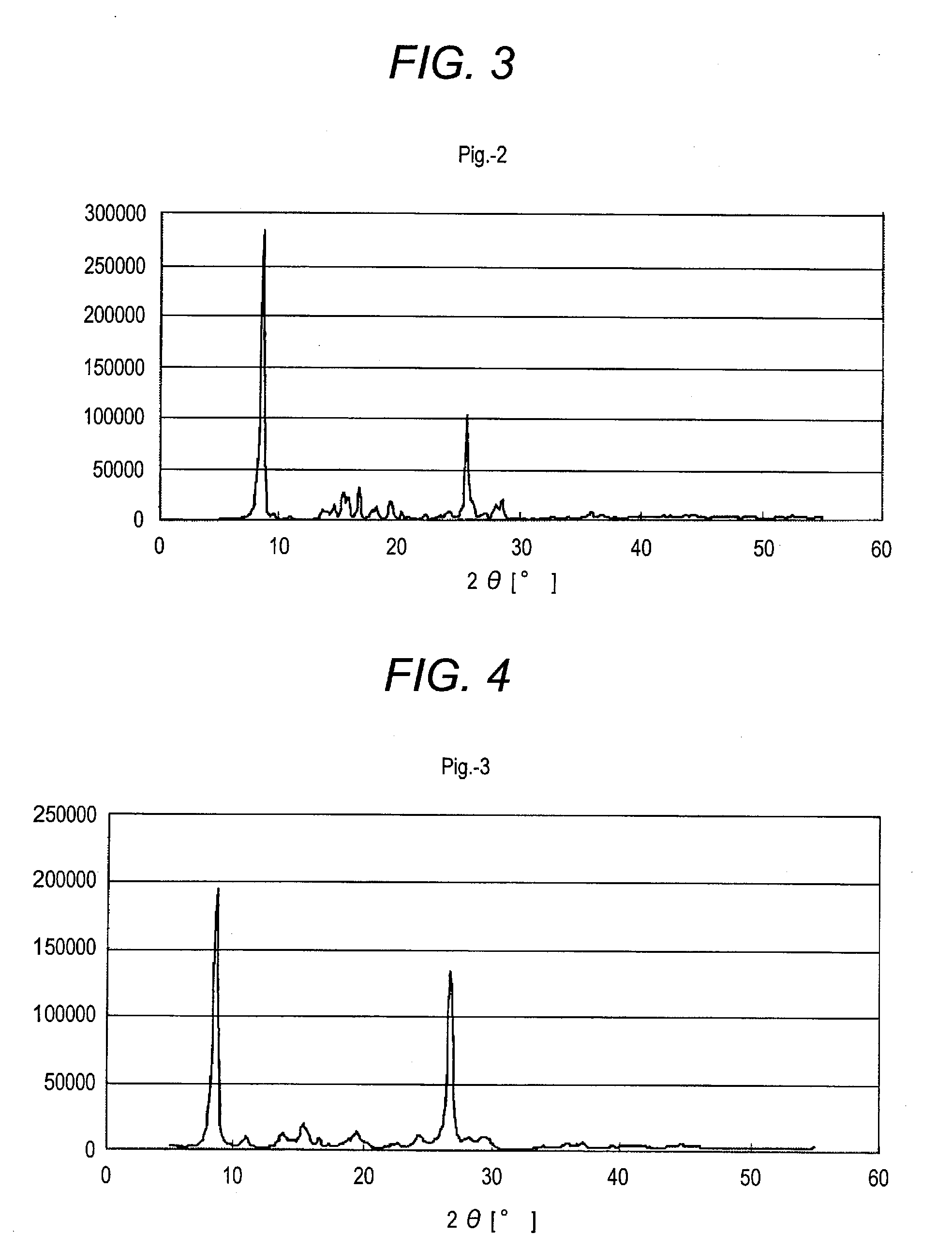Aqueous pigment dispersion and aqueous ink for ink jet recording
a technology of ink jet recording and pigment dispersion, which is applied in the direction of disazo dyes, inks, coatings, etc., can solve the problems of difficult to allow each other to be compatible, the group of compounds which can be used as pigments is extremely limited in comparison with dyes, and the absorption characteristics of colorants are not fast enough to achieve the effect of absorption, excellent ink ejection properties, and good hu
- Summary
- Abstract
- Description
- Claims
- Application Information
AI Technical Summary
Benefits of technology
Problems solved by technology
Method used
Image
Examples
synthesis example 1
Synthesis of an Azo Pigment Composition (1a)
[0358]
(1) Synthesis of Intermediate (a)
[0359]42.4 g (0.4 mol) of trimethyl orthoformate, 20.4 g (0.2 mol) of glacial acetic acid, and 0.5 g of p-toluenesulfonic acid are added to 29.7 g (0.3 mol) of methyl cyanoacetate, and the resulting mixture is heated to 110° C. (external temperature), followed by stirring for 20 hours with distilling off low-boiling components produced from the reaction system. The resulting reaction solution is concentrated under reduced pressure, and is subjected to purification by silica gel column to obtain 14.1 g (yellow powder; yield: 30%) of the intermediate (a). Results of NMR measurement of the thus-obtained intermediate (a) are as follows. 1H-NMR (300 MHz, CDCl3): 7.96 (s, 1H), 4.15 (s, 3H), 3.81 (s, 3H)
(2) Synthesis of Intermediate (b)
[0360]150 mL of isopropanol is added to 7.4 mL (141 mmol) of methylhydrazine, followed by cooling to 15° C. (internal temperature). After gradually adding 7.0 g (49.6 mmol) of...
synthesis example 2
Synthesis of an Azo Pigment Composition (2a)
[0369]Synthesis scheme of azo pigment (2a) is shown below.
(7) Synthesis of Intermediate (a)
[0370]42.4 g (0.4 mol) of trimethyl orthoformate, 20.4 g (0.2 mol) of glacial acetic acid, and 0.5 g of p-toluenesulfonic acid are added to 29.7 g (0.3 mol) of methyl cyanoacetate, and the resulting mixture is heated to 110° C. (external temperature), followed by stirring for 20 hours with distilling off low-boiling components produced from the reaction system. The resulting reaction solution is concentrated under reduced pressure, and is subjected to purification by silica gel column to obtain 14.1 g (yellow powder; yield: 30%) of the intermediate (a). Results of NMR measurement of the thus-obtained intermediate (a) are as follows. 1H-NMR (300 MHz, CDCl3): 7.96 (s, 1H), 4.15 (s, 3H), 3.81 (s, 3H)
(8) Synthesis of Intermediate (b)
[0371]150 ml of isopropanol is added to 7.4 ml (141 mmol) of methylhydrazine, followed by cooling to 15° C. (internal tempe...
synthesis examples 3 to 19
[0378]Azo pigments of the invention shown in the following Table 1 are synthesized according to the above-described synthesis process of the above-illustrative compounds (Pig.-1) and (Pig.-18) shown in the above-described Synthesis Examples 1 and 2 or by combining the production process of the azo pigments of the present invention.
[0379]The X-ray diffraction patterns with characteristic Cu Kα line of the thus-obtained azo pigments are shown in FIGS. 3 to 19.
TABLE 1X-ray Diffraction Pattern withAzo Pigment of Inventioncharacteristic Cu Kα linePig.-1FIG. 1Pig.-18FIG. 2Pig.-2FIG. 3Pig.-3FIG. 4Pig.-6FIG. 5Pig.-10FIG. 6Pig.-12FIG. 7Pig.-15FIG. 8Pig.-16FIG. 9Pig.-19FIG. 10Pig.-21FIG. 11Pig.-24FIG. 12Pig.-25FIG. 13Pig.-26FIG. 14Pig.-30FIG. 15Pig.-31FIG. 16Pig.-32FIG. 17Pig.-33FIG. 18Pig.-34FIG. 19
PUM
| Property | Measurement | Unit |
|---|---|---|
| 2θ | aaaaa | aaaaa |
| 2θ | aaaaa | aaaaa |
| 2θ±0 | aaaaa | aaaaa |
Abstract
Description
Claims
Application Information
 Login to View More
Login to View More - R&D
- Intellectual Property
- Life Sciences
- Materials
- Tech Scout
- Unparalleled Data Quality
- Higher Quality Content
- 60% Fewer Hallucinations
Browse by: Latest US Patents, China's latest patents, Technical Efficacy Thesaurus, Application Domain, Technology Topic, Popular Technical Reports.
© 2025 PatSnap. All rights reserved.Legal|Privacy policy|Modern Slavery Act Transparency Statement|Sitemap|About US| Contact US: help@patsnap.com



